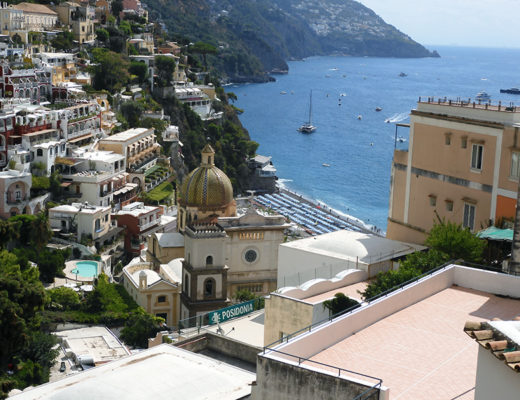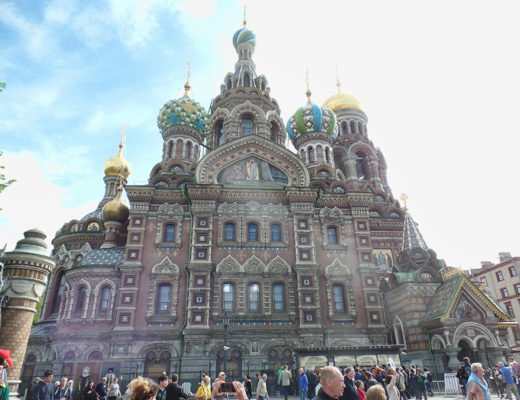On our second trip three years after our first we had a better idea what we wanted to do. We wanted to do more than walk vineyards, learn the process and taste some wines. We wanted to visit boutique wineries, spend some time on the ground, like overnight, and actually talk with one or more winemakers about what they were doing and learning about wine making. We intended to buy some of the wines we couldn’t find in the US, but our plans would change as we went along.
Mauricio had suggested that we stay at a couple of wineries, each of which had a small set of guest rooms for the wine buyers. Again we had four days, would spend two nights in Santiago and two nights at wineries. When Mauricio picked us up at the airport, he took us to an empanada place he knew on the way to our first tasting. We sampled two types of empanadas, a meat and a cheese. With it he introduced us to Casa Silva Carmenere and while he had a second bottle for us to try of another wine, we passed up on it as we still had two wineries to visit. The first was Vinedos Emiliana, which was the first organic wine producer in Chile. It is best known for its premium wines Coyam and G. You can find the high volume Cabernets, Carmeneres, and Sauvignon Blancs in retail stores in the US. The tour showed us how they permitted animals to fertilize the vines rather than commercial fertilization as part of their natural heritage. It was fascinating how they approached their production. The only problem we had with this tasting was after wine with empanadas, we had nine bottles to sample at this stop, all before noon. The remarkable wine we tasted was a current year Sauvignon Blanc that burst with the taste of green apples in our mouths. We both remarked upon that, but in the store bought a bottle of the Coyam and G.
Casa Silva Polo Pony
On day two we visited Vina Neyen de Apalta and Vina Casa Lapostolle, Clos Apalta. Neyen was interesting in that the wine is excellent, a blend of Carmenere and Cabernet (the ratio changes from year to year). Notable at this winery is the Eucalyptus trees and white rose beds, as we had seen at House of Morande. We stopped by a few months after the earthquake that hit near Santiago in 2010. The winery had lost 5,000 bottles in the earthquake and was putting up chicken wire to keep the bottles from breaking in the event of another event. We bought a couple bottles of ‘wedding wine’ from Neyen, which means ‘Spirit’ in the native Mapudungun language. On the bottles is a figure that looks like a spaceman, which appears in many areas of Chile. It also gives rise to speculation about the possibility of space visitors thousands of years ago. The owner had produced a limited Cabernet Sauvignon for a friend’s daughter’s wedding. Several years later we found these were among the best bottles we brought back. The non-wedding Neyen is available in the US. We had lunch in Santa Cruz, an interesting stop along the way. The food was typical of the local cuisine.
The Clos Apalta winery of Casa Lapostolle was one of the most memorable parts of this trip. The winery is owned by Alexandra Marnier Lapostolle, yes, of the family that owns Grand Marnier. The winery is 100% gravity-fed and spans five levels, of which three are buried in a granite hillside. As you approach, you drive through a vast valley of vineyards with the winery, which looks like a barrel, overlooking. The front of the barrel is floor to ceiling glass windows on each of the five levels. One of the attractions here was that their first vintage, a premium carmenere blend with cabernet sauvignon and cabernet franc, was the Wine Spectator number one wine of the year for their 2005 vintage.
That night we stayed in Vina del Playa at the SUTIL Winery guest house. The guest house had a pool table where we refreshed our now rusty skills and gardens with roses we could visit. The insects caused us to cut short our walk in the gardens and spend the rest of the evening playing pool. Dinner was a buffet as was breakfast. A small number of guests shared our accomodations. We thought it interesting to stay out rather than come back to the city of Santiago.
Day three we visited Vina Antiyal, a bio-dynamic winery owned by Alvaro Espinosa, who was the founder of Emiliana, which we visited the first day. That afternoon we visited Vina Quebrada de Macul, whose brand name is Domus Aurea. Vina Antiyal was not only very interesting, but hard to find. Mauricio discovered there were no signs and he had to find a street number to locate the main office, which was at Espinosa’s house. When we located it, we found a small home, with vines growing in his front yard and a small office, tasting area in a separate building near the gate. Espinosa was home and we had a chance to chat with the famous winemaker about his new project, the differences between organic and bio-dynamic wines and also his new experiments with an egg shaped fermentation vat. He left us with his lead winemaker and went over to the actual winery about two miles away. We had an interesting tour of the vines, discussion about insect control, and how to make a ‘pure’ wine that does not use ‘corrective’ solutions to get the taste the winemaker is looking for. We tasted the Antiyal up on the roof of the winery, looking around the valley as we sampled. After the tasting we had a chance to see the egg-shaped vat, although they did not have any wine from that technology we could taste. An interesting experiment.
We had an interesting lunch at a school along the way, where we sat out in the yard under a tent. The vegetables were grown in a garden we could see from our vantage point
Mauricio drove us back to Santiago and Vina Quebrada de Macul. We learned that the land for this winery had been part of Cousino Macul, one of the largest and oldest wineries in Santiago. On our first trip in Mauricio had let us tour the Macul family home, which dated back to the mid 1800s. The family had first made their money in railroads, and then consolidated the partnerships into one of the wealthiest families in Santiago. This winery had bought about ten acres of prime vineyards and established their own winery. What was intriguing about Vina Quebrada is that they have subdivided their land into ‘microclimates’ and plant accordingly. They also use French oak barrels, but use half from the south of France and half from the north. This didn’t sound like such a big deal until the tasting. Our host was the head of finance for the winery, not someone you expected to be conducting a tasting. He also did not bring out a bottle. Instead he had small vials of wine with rubber caps. They looked like oversized test tubes. He uncapped one and poured a taste into each of our glasses. He told us this wine was produced from cabernet sauvignon grapes grown in the northeast corner of the parcel and aged in northern French oak. It was excellent and I already knew I was going to buy at least a few bottles. He then had us rinse our glasses and he poured an equal amount into them from the other test tube-like bottle. This, he informed us was from the south-west corner of the property and aged in southern French oak. The taste, while also phenomenal, was very different from the first. He informed us that they divided the property into ten microclimates, half each in north and south French oak so there were 20 different layers of taste in each bottle of Domus Aurea.
We drove into Santiago, dropped my spouse at the hotel to rest and Mauricio and I went to a retail wine store by the name of Wein. This is the largest wine store in Santiago and where I had a ‘Pretty Woman’ experience. It was like being on Rodeo drive with some rich guy’s credit card. They had a tasting room on the second floor and I could sample any wine in the store. For two hours they brought more and more expensive wines for me to sample. By the end of our time in the store I had every employee bubble wrapping the 48 bottles I had purchased. I turned to Mauricio and asked if he was going to work his magic again for me at the airport. He just smiled, knowingly.
That night we attended a dinner at Los Buenos Muchachos restaurant which included a local historical heritage performance of native dances and music. This was an interesting cultural experience, but not a highlight of this trip. We stayed in Santiago at the same hotel as the first night.
On day four we drove out to the San Antonio valley. We visited a small town known for its pottery and had lunch at La Narjana, ‘the Orange’. This is another typical Chilean rural restaurant with traditional foods and a dirt floor. We shopped for a bit, visiting most of the shops and seeing a wide variety of pottery and native crafts.
After lunch we drove on to Vina Matetic, which is part of a 3000 acre hacienda. We toured the state of the art winery, discovered some of the largest fermentation vats we saw during the trip and did a tasting of the Matetic wines, some of which are available in the US. We spent the night at La Casona, which is their guest house for wine buyers. This was by far the best accommodations of the trip. There are only seven rooms, but they are spaceous, modern and well equipped. The restaurant was spectacular. It is a small building that overlooks a pond. There were only four tables and four staff members for the restaurant including the chef. The chef is the son-in-law of the owner and has a four-star restaurant in Santiago, or so we were told. The meal was the best of the trip, Chilean Sea Bass that was so flaky it just melted in your mouth. A great bottle of wine and a perfect last night for our trip.
Mauricio again lived up to his reputation. Not only was everything bubble wrapped and sealed in cases, but once at the airport we plastic wrapped the boxes two at a time so that I only had two ‘boxes’ to ship, even though each contained 24 bottles of wine. With my Executive Platinum status on American Airlines I did not pay extra for the baggage. So I was able to bring back the wine I bought without paying an extra fee for shipping. When we went through customs at DFW airport, since the wine was all for my personal consumption the duty was less than $5.





No Comments